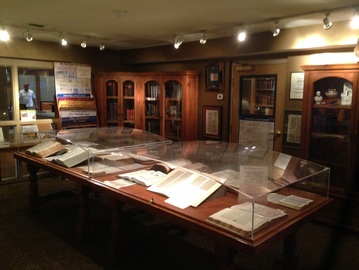

Since the new artifacts appeared on the market, institutions and private collectors have spent somewhere between $35 million and $45 million to purchase them, Dead Sea Scroll expert Rabbi Lawrence Schiffman told those assembled at Friday’s symposium. One of the fake Dead Sea Scrolls from the Museum of the Bible at high magnification. The post-2002 fragments reportedly were first sold by his son William Kando. There are some 100,000 authenticated fragments, but the Museum of the Bible’s holdings-reportedly acquired for millions of dollars-were all among a group of some 70 previously unknown Dead Sea Scroll fragments that came to market after 2002.Īn antiquities dealer named Khalil Iskandar Shahin, also known as Kando, acquired many of the original Dead Sea Scrolls in the 1950s. The Dead Sea Scrolls are the oldest-known Biblical texts, and most of them belong to the Israel Museum in Jerusalem.

“Not only did the coating facilitate the writing on these uneven and bumpy surfaces, but it also served to mimic the degradation you would see in the authentic scrolls.” “It’s the First Domino”
#THE BIBLE DISCOVERY MUSEUM SKIN#
The fragments from the Museum of the Bible were “heavily impregnated with an amber-colored animal skin glue,” Loll said. “This confirmed our conclusion that ancient materials were repurposed for the creation of these fragments,” said Loll.Īnother clue was that parts of the real Dead Sea Scrolls look a bit like they’ve been coated in glue, because the collagen in parchment breaks down over the millennia, turning into gelatin. One of the fake Dead Sea Scrolls from the Museum of the Bible at high magnification, revealing anomalies. More damningly, a close examination showed that the writing had been applied to a surface that was already fragmented-the ink dripped over the sides and fell into cracks that wouldn’t have existed when the leather was new. “Until you do a high magnification analysis, as well as a chemical and elemental analysis, you really can’t tell the difference.”īut under a microscope, there were several dead giveaways-first of all, the leather was very bumpy and rough. “It was obvious to us that the scribe had a very difficult time writing on the surface, unlike the clean smooth parchment that would have been used 2,000 years ago,” Loll explained. “After 2,000 years, leather and parchment look very similar,” said Loll. Instead of being made from tanned or lightly tanned parchment, like the real Dead Sea Scrolls, the Museum of the Bible’s fragments were made of leather-likely ancient, perhaps from the soles of old shoes. Loll cited several pieces of evidence that led her team to its conclusion. “We came to an unanimous conclusion that they were all forgeries,” Colette Loll, founder of Art Fraud Insights, which conducted the tests, told Artnet News. “There were a lot of anomalies that we identified through microscopy.” How the Fakes Were Caught The findings were first announced by National Geographic, and have already launched a contentious debate on Twitter. In a 200-page report, the five-person team judged the artifacts to be 20th-century forgeries meant to mimic the famed Dead Sea Scrolls first discovered in 1946 in Israel’s Qumran caves. The museum announced the news at an academic symposium on Friday, presenting the results of a battery of tests conducted by outside experts between May and October of 2019. And since the Museum of the Bible’s trove was a small part of a much larger group of scroll fragments that have since spread around the globe, the finding could have big implications for the field. Every single one of its 16 fragments of the famed Dead Sea Scrolls have been found to be modern-day forgeries-not just the five previously identified fakes. There’s more bad news for the Museum of the Bible in Washington, DC.


 0 kommentar(er)
0 kommentar(er)
